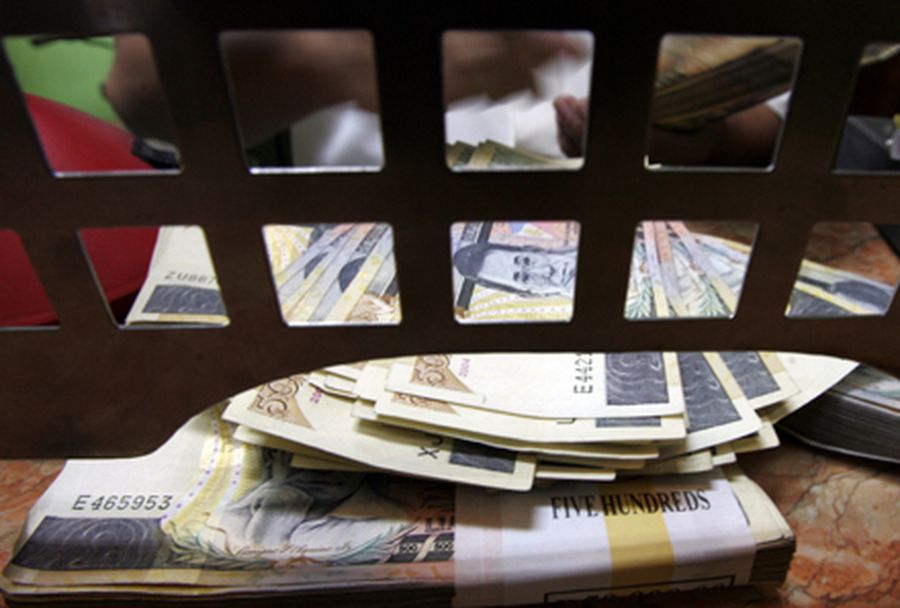When the Philippines priced a global bond in pesos in September 2010, market participants predicted a wave of similar deals across Asia. Despite the obvious advantages for issuers, investors are dragging their feet.

Source: Reuters/Romeo Ranoco
A Filipino worker counts 500 peso bills inside a money changer in Manila
Since the Asian Financial Crisis of the late 1990s, there has been a chorus of disapproval over the dangers inherent in issuers having a currency mismatch, particularly sovereign issuers that habitually fund in large sizes.
However, while funding in domestic currencies has been growing across the region, the limited depth of onshore liquidity has meant that obtaining size through local issuance versus what can be achieved via the G3 markets has not been viable. Hence, the appeal of tapping the vast international liquidity pool with issuance in Global local currencies.
The Philippines raised Ps44.1bn (US$1.05bn) from a 10-year bond, which opened up the Global Asian domestic currency primary market, and followed that up in January 2011 with a Ps54.8bn 25-year maturity.
The ability to print at a longer tenor seemingly indicated that the market for the product had matured in just four months. Indeed, with almost half of the deal placed with US real-money accounts, DCM bankers believed they had unearthed a rich vein of offshore demand.
Investors were drawn to the bonds as they were Euroclear eligible and settled in US dollars, giving them both credit and foreign-exchange exposure on the deal. In the process, the Philippines was able to price the paper 10bp through the 25-year PDST-F domestic benchmark curve, at a 6.25% yield.
However, despite plans to return to the Global peso arena, the Philippines has not printed in the product again – a reflection of the shine coming off the Asian Global market. This is, perhaps, because the product is essentially a call on currency direction versus the dollar.
Nevertheless, since the first Global deal came in late 2010 and Asian currencies have been appreciating gradually against the US unit, many investors see little further upside and the chance to book alpha from the currency play.
This dynamic was also starkly in play with the synthetic Global renminbi market, where issuance got off to a flying start in late 2010 with deals for Shui On Land, LDK Solar and Powerlong coming in quick succession, promising an issuance bonanza that never came to fruition.
Shui On Land inaugurated the synthetic renminbi product in the public markets with a three-year Reg S bond in December 2010, which drew a hefty Rmb32bn (US$4.81bn) book after just seven hours, for an eye-popping 21 times cover, representing an unprecedented blowout for a Chinese property company in the international bond markets.
The company returned the following January with a Rmb3.5bn four-year bond, with issuance in the product reaching a chunky Rmb18.75bn (US$2.8bn) in little over a month. Shui On managed to pull in 150 accounts via leads Deutsche Bank, Standard Chartered, UBS, Barclays Capital and BNP Paribas.
“The deals that have come in Global format have been less liquid in secondary than deals the same issuer brought in dollar format, which certainly took the shine off the product. Quite simply, investors are of the opinion that most Asian currencies present little further upside against the dollar, particularly in a highly risk-averse market that has, traditionally, been a major positive for the US unit,” said a regional syndicate head in Hong Kong.
Still, despite this less-than-auspicious backdrop, the Philippines last month conducted a non-deal roadshow in the US, via Citigroup, Goldman Sachs, JP Morgan and Morgan Stanley, where Global peso notes were pitched to investors.
Also, the Export-Import Bank of Korea is rumoured to be eyeing the peso market, potentially making it the first foreign issuer to price a peso deal since the Asian Development Bank in 2005, although it is unclear if a deal will come in Global or domestic format.
In the latter case, a 20% withholding tax will be levied on the paper, which will make the proposition less attractive for investors, even those with a double-taxation agreement with the Philippines, given the extra paper work involved.
“The Global Asian currency market looked a no brainer 18 months ago when China’s growth was on a roll and the currency looked a one-way bet, while the Philippines was a clear upgrade story and the peso looked like it had legs over the medium term,” said a Singapore trader.
“However, now with China’s growth hovering in the 7.5% area, the renminbi having stalled and the Philippines upgrade having happened, the ability of these currencies to deliver alpha looks limited. So, investors are now happy to just take a credit spread play in US dollars instead,” he added.
